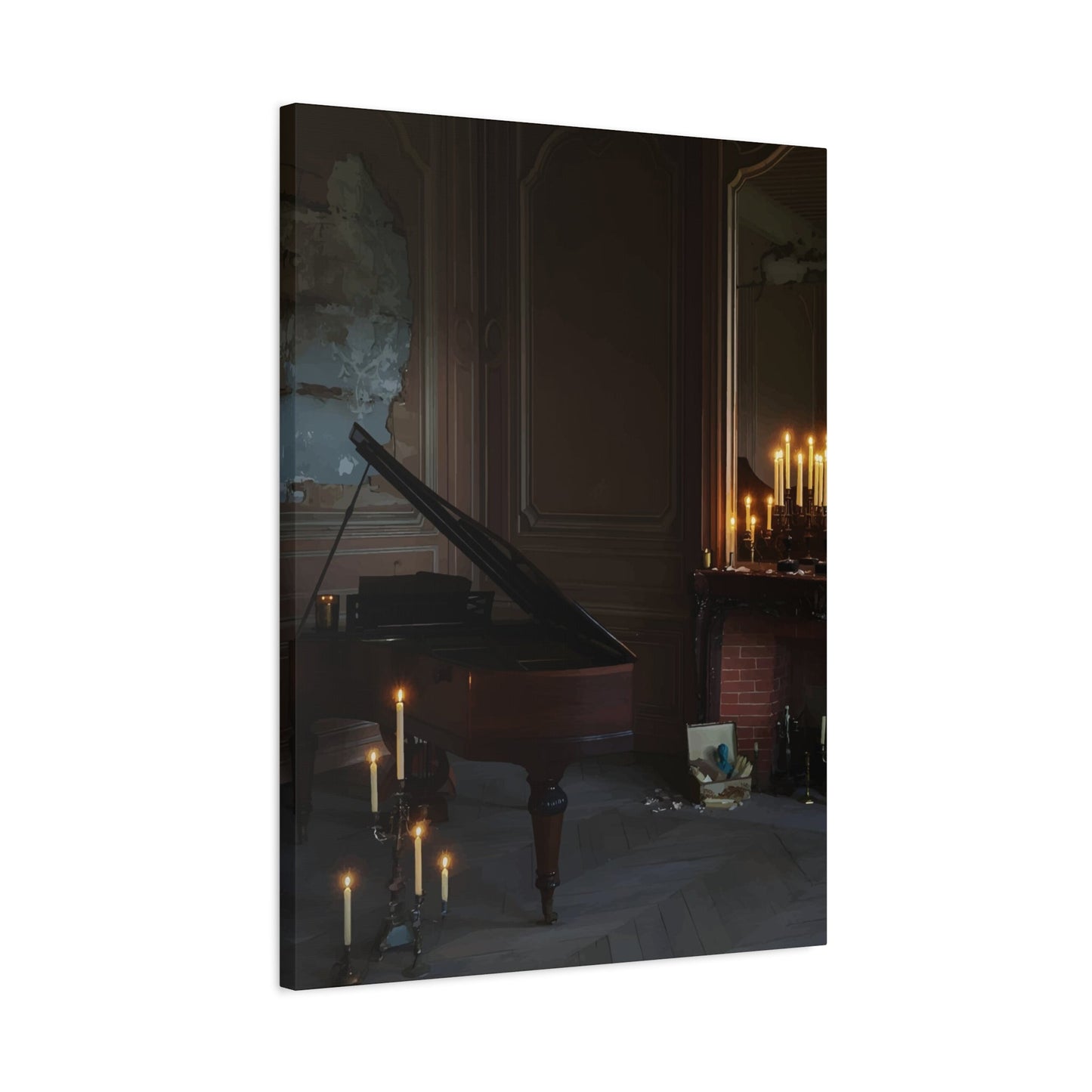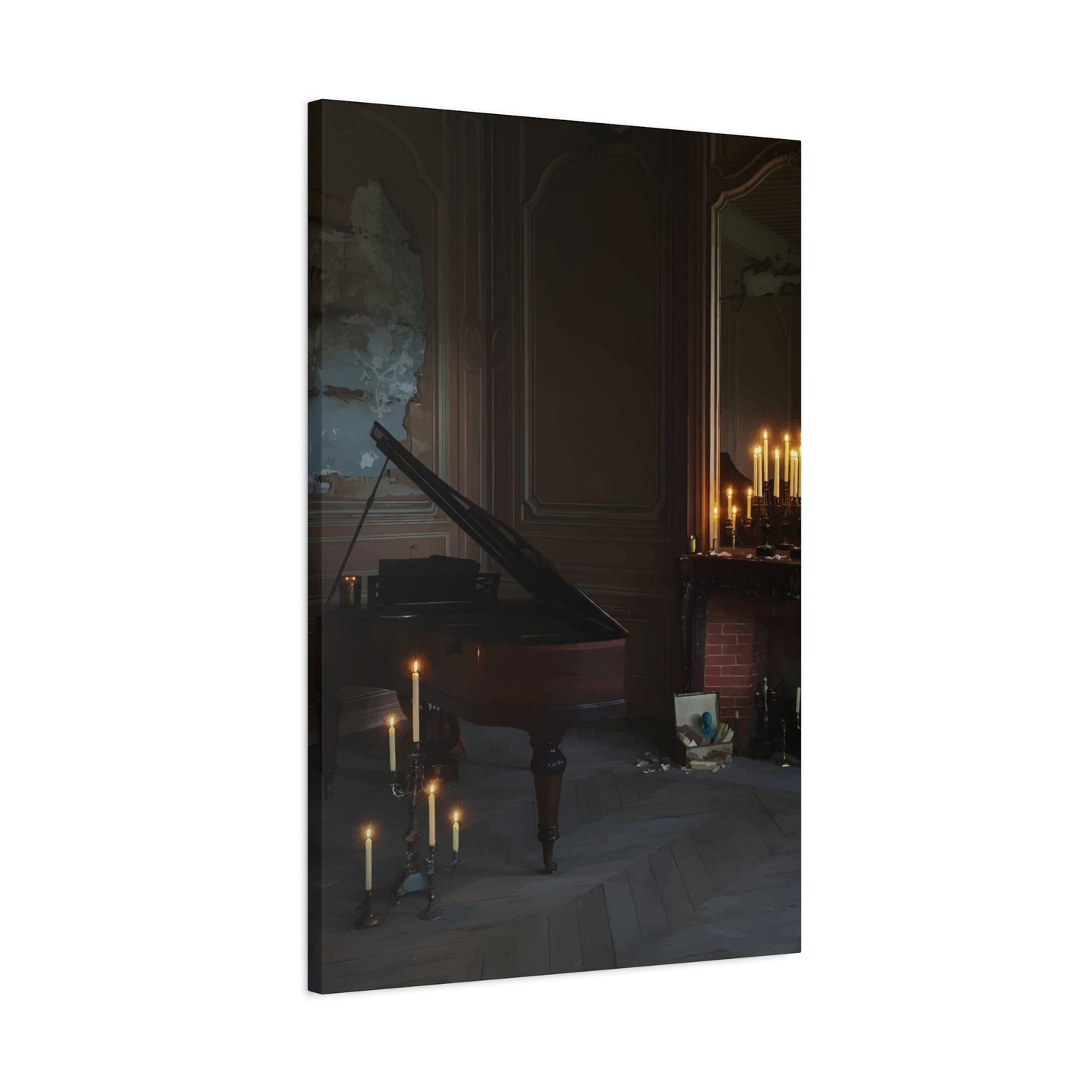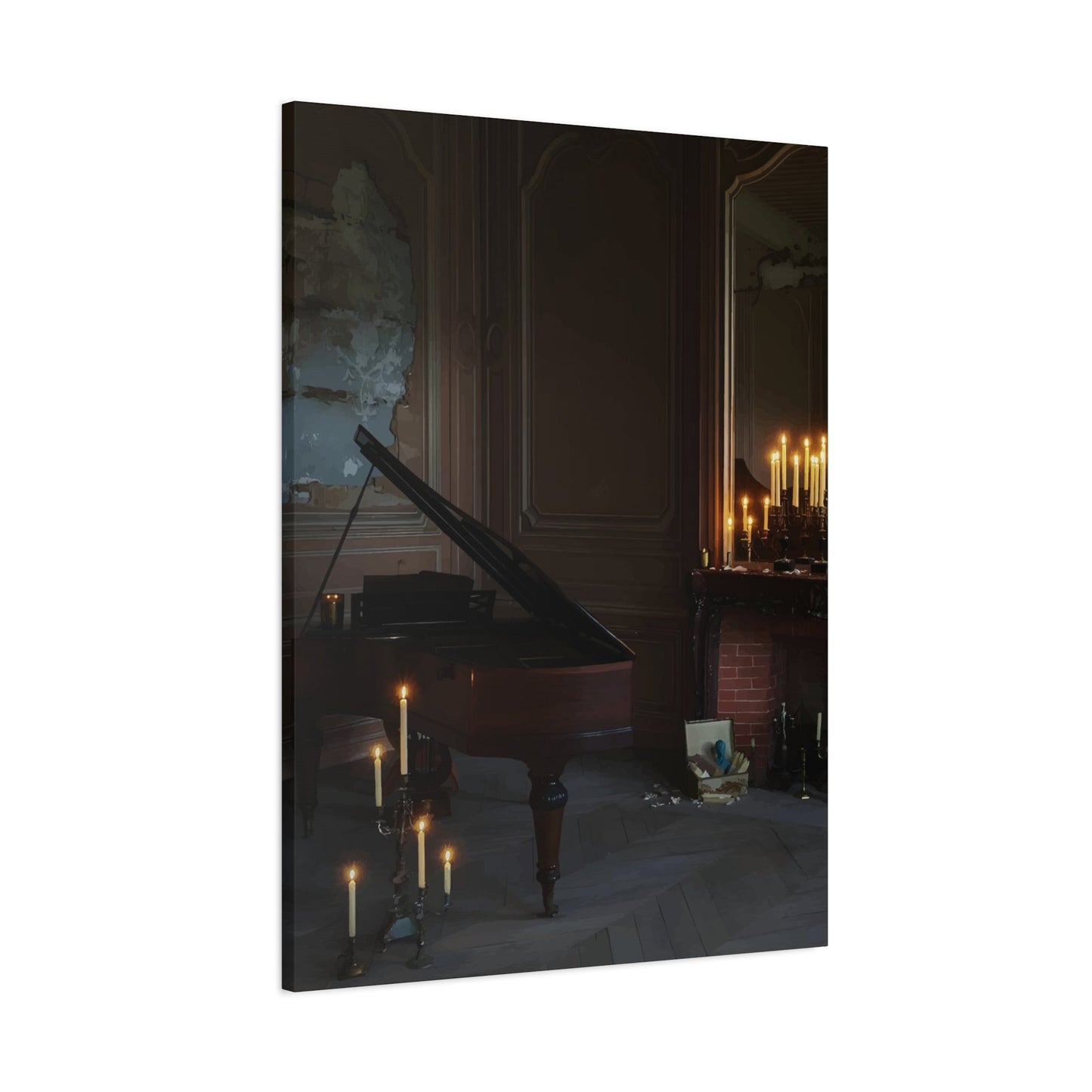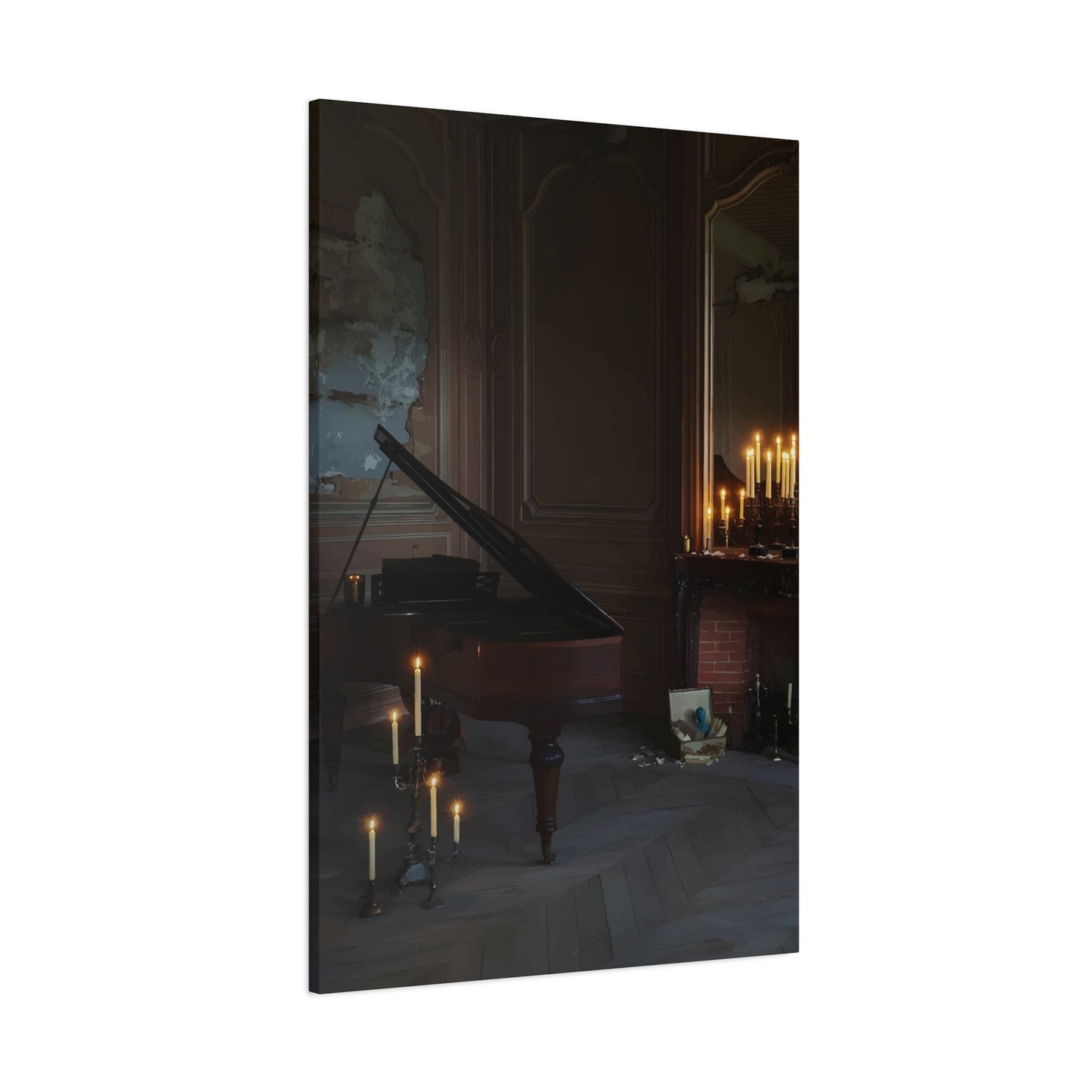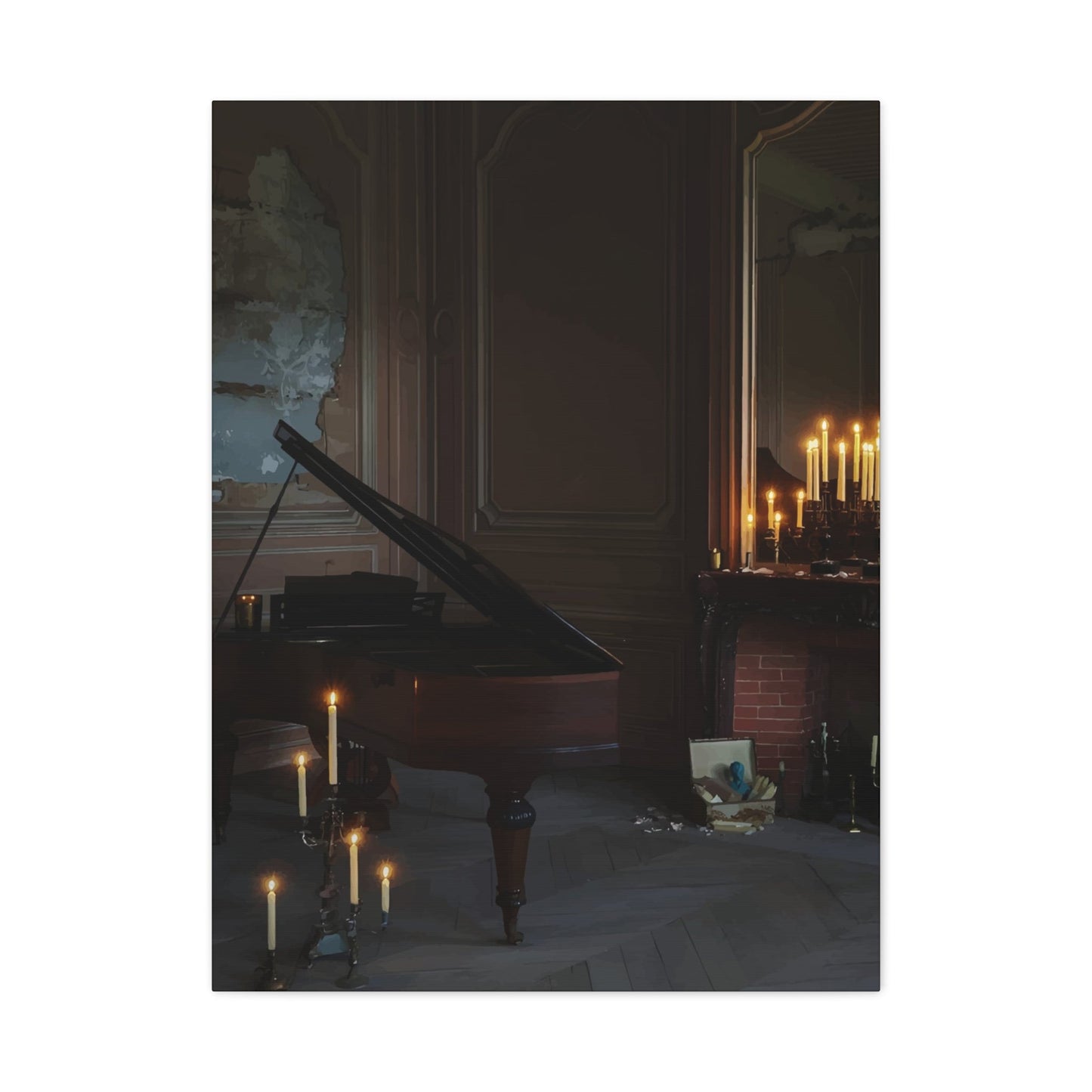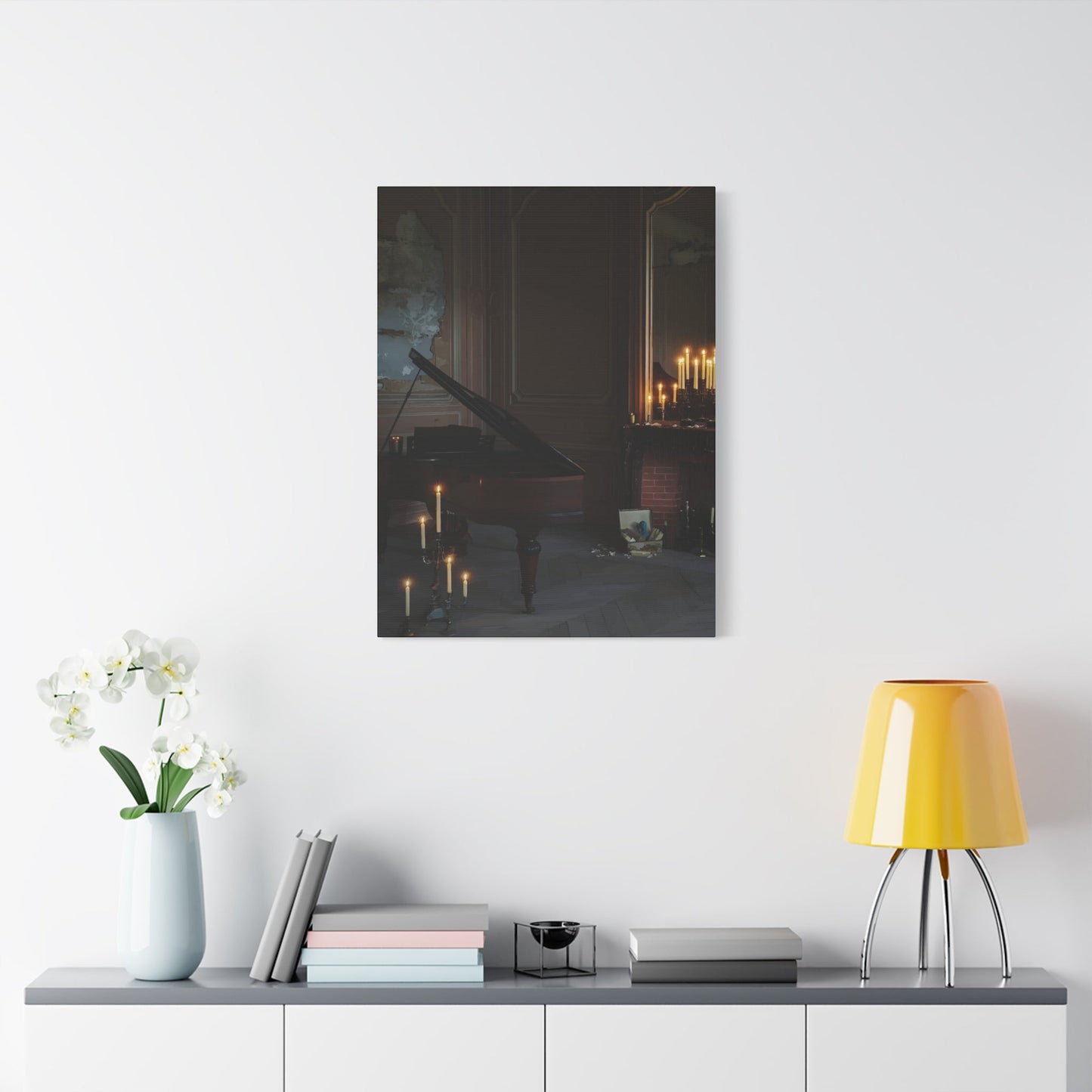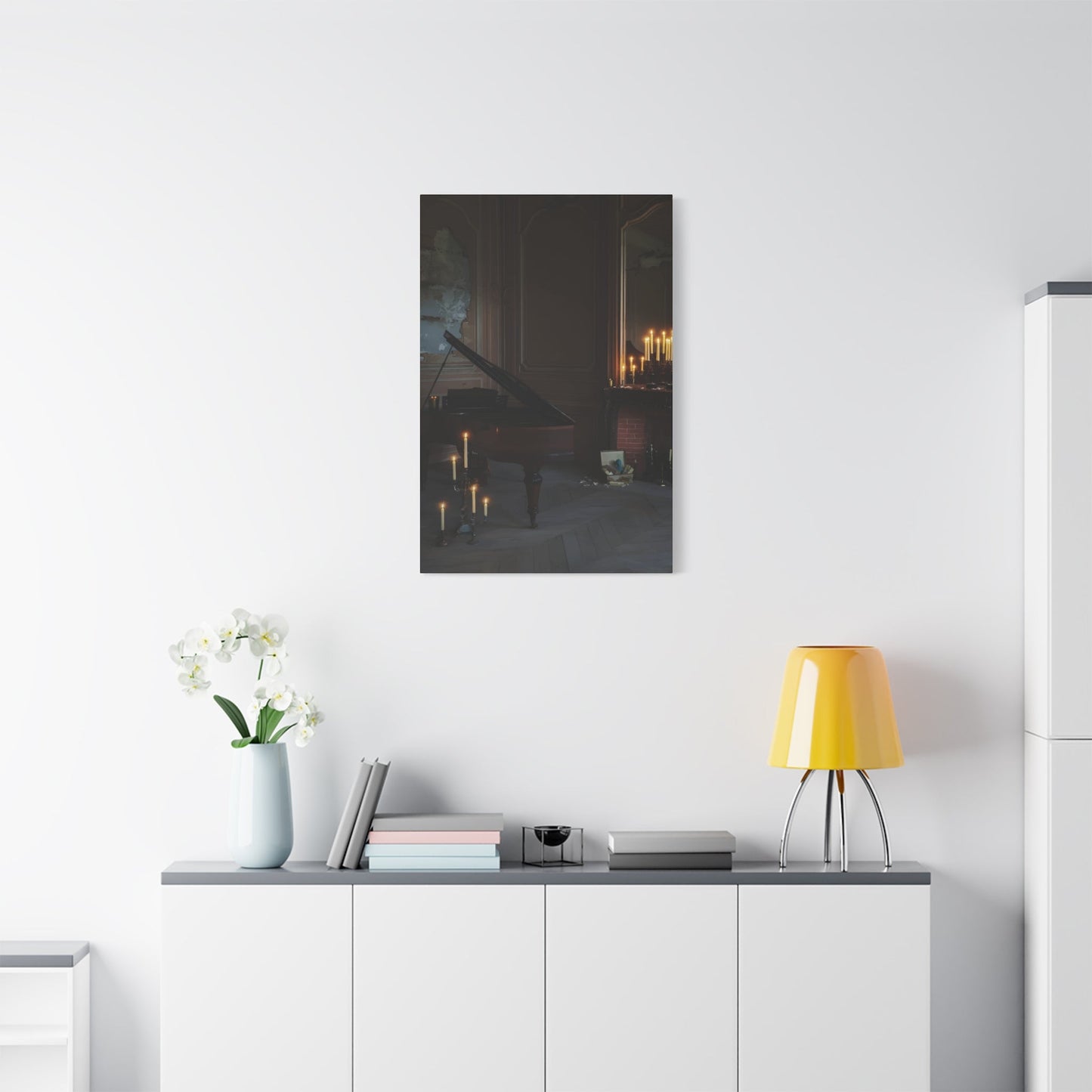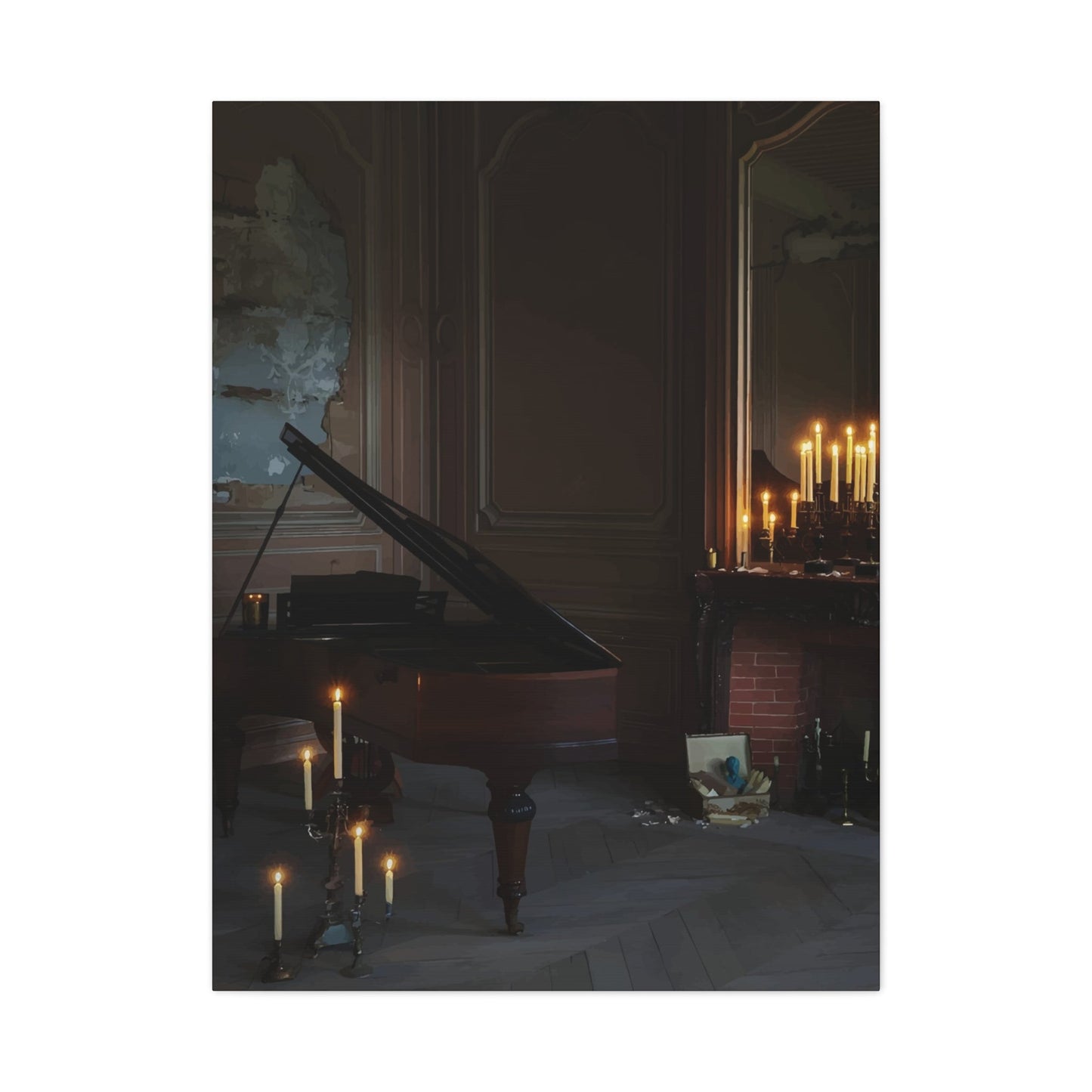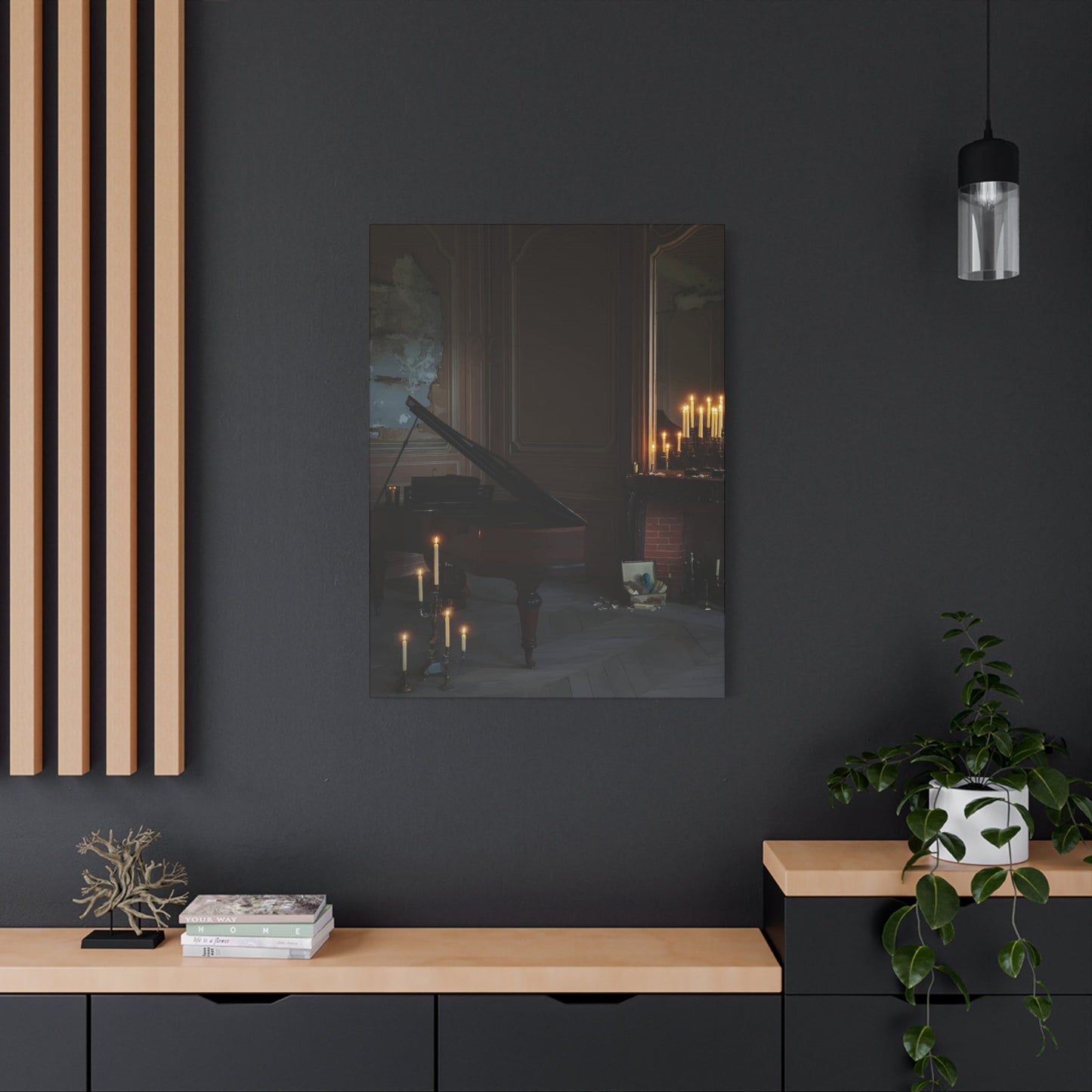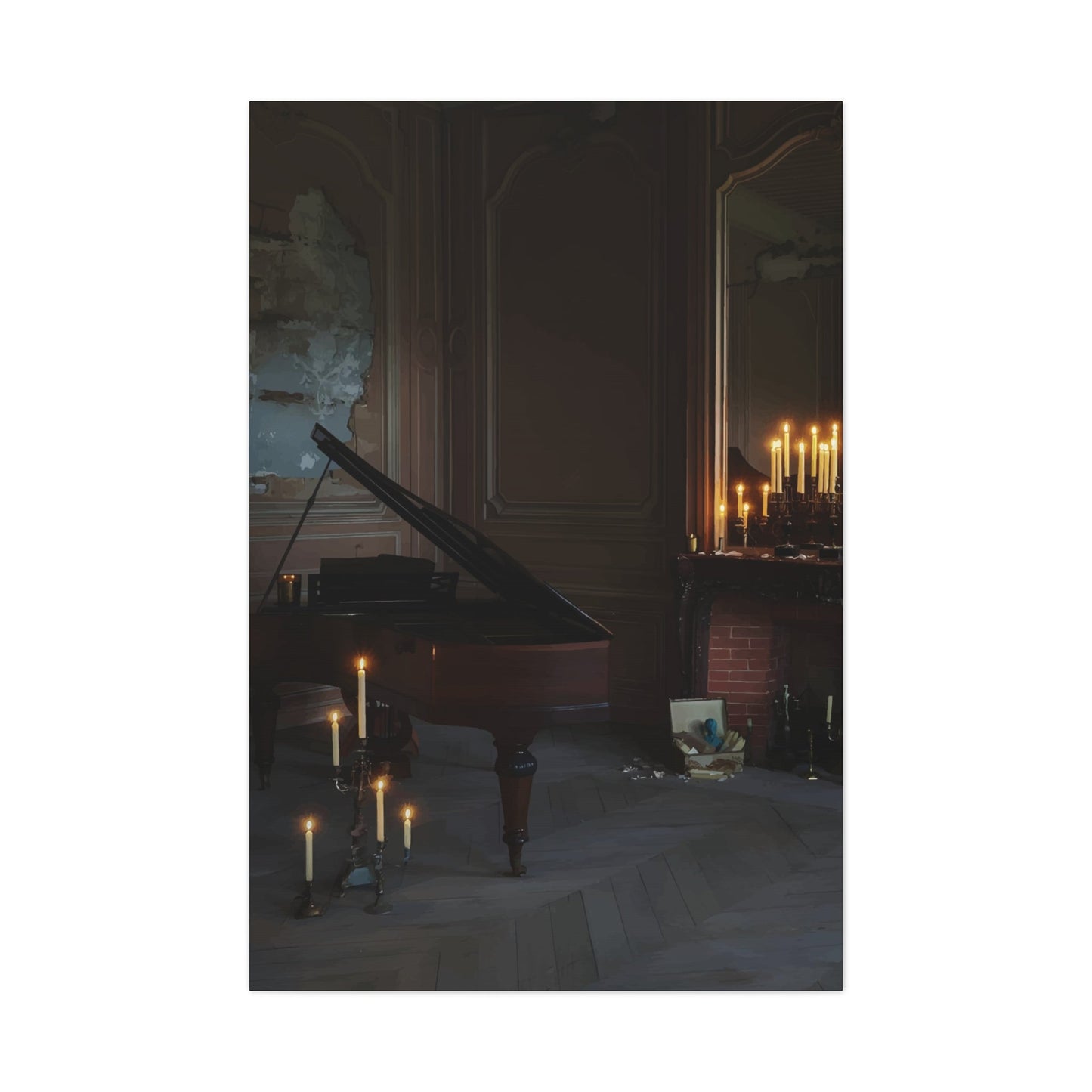Creating a Cozy Atmosphere: How Candlelit Wall Art Transforms Your Room
The gentle flicker of candlelight has captivated human imagination for centuries, representing warmth, intimacy, and timeless beauty. In today's fast-paced digital world, incorporating candlelit wall art into your living spaces offers a unique opportunity to create sanctuaries of peace and visual delight. This comprehensive exploration delves into every aspect of candlelit wall art, from understanding its profound psychological impact to mastering the intricate details of selection, placement, and styling.
Candlelit wall art encompasses a diverse range of artistic expressions that capture the essence of flickering flames, ambient lighting, and the serene atmosphere that candles naturally create. These pieces range from photographic prints showcasing elegant candle arrangements to painted masterpieces that interpret candlelight through various artistic movements. The appeal of such artwork lies not merely in its aesthetic value but in its ability to transform any room into a haven of tranquility and sophistication.
The popularity of candlelit wall art has surged in recent years as homeowners increasingly seek to create spaces that offer respite from the harsh realities of modern life. Interior designers have embraced this trend, recognizing that these pieces serve as more than mere decoration; they function as emotional anchors that ground a room's atmosphere in warmth and comfort. The soft, golden hues typically associated with candlelight have been proven to reduce stress levels and promote relaxation, making candlelit wall art not just a design choice but a wellness investment.
Understanding the versatility of candlelit wall art requires appreciating its ability to complement various interior design styles while maintaining its distinctive character. Whether your home embraces minimalist modernism, rustic farmhouse charm, or classic traditional elegance, there exists a style of candlelit wall art that can seamlessly integrate into your existing decor while enhancing its overall impact. This adaptability stems from the universal appeal of candlelight itself – a element that has remained constant throughout human civilization regardless of cultural or temporal context.
The process of selecting and incorporating candlelit wall art into your home involves multiple considerations, from understanding the psychological effects of warm lighting to mastering the technical aspects of proper installation and maintenance. Each piece carries the potential to dramatically alter the perceived ambiance of a space, making careful selection crucial to achieving your desired atmospheric goals. The interplay between artificial lighting and candlelit artwork creates layers of visual interest that can make even the most modest spaces feel luxurious and inviting.
Contemporary artists and photographers have embraced candlelit themes with remarkable creativity, producing works that range from hyperrealistic depictions of actual candles to abstract interpretations of light and shadow. These modern interpretations often incorporate innovative techniques and materials, allowing for greater durability and visual impact than traditional paintings. The evolution of printing technology has also made high-quality reproductions of candlelit artwork more accessible to homeowners who may not have the budget for original pieces but still desire the transformative power of professional-grade art.
The science behind candlelit wall art's appeal lies in our evolutionary relationship with fire and light. Humans have gathered around flames for millennia, creating deep psychological associations between warm light and safety, community, and comfort. When we incorporate representations of candlelight into our living spaces, we tap into these primal responses, creating environments that feel inherently welcoming and secure. This biological predisposition explains why candlelit wall art remains timelessly popular across diverse demographic groups and cultural backgrounds.
Establishing an Inviting Environment Through Candlelit Artwork
The foundation of creating a cozy atmosphere with candlelit wall art begins with understanding the fundamental principles of ambient lighting and visual harmony. Candlelit artwork serves as a visual representation of warmth that can psychologically influence how comfortable and welcoming a space feels to both inhabitants and visitors. The key lies in recognizing that these pieces function as more than decorative elements; they actively participate in shaping the emotional landscape of your home.
When strategically placed, candlelit wall art creates focal points that draw the eye while simultaneously establishing a sense of intimacy and enclosure. The warm golden tones characteristic of candlelight naturally complement human skin tones, making spaces feel more flattering and comfortable for occupants. This effect is particularly pronounced in social areas where people gather, as the visual suggestion of candlelight encourages relaxation and open conversation.
The psychological impact of candlelit wall art extends beyond mere aesthetics to influence circadian rhythms and stress levels. Research in environmental psychology has demonstrated that exposure to warm light colors, even in artistic representations, can promote the production of melatonin and other hormones associated with relaxation and sleep preparation. By incorporating these pieces into bedrooms and relaxation areas, homeowners can create environments that naturally support healthy sleep patterns and stress reduction.
Creating layers of visual interest through candlelit artwork involves understanding how different pieces interact with each other and with the room's existing elements. A single large candlelit piece can serve as a dramatic statement, while collections of smaller works can create gallery walls that tell cohesive stories about light, warmth, and comfort. The arrangement of these pieces should consider sight lines, natural lighting conditions, and the room's primary functions to maximize their atmospheric impact.
The selection process for candlelit wall art should take into account the specific emotional goals for each space. Bedrooms might benefit from softer, more romantic interpretations of candlelight, while living areas could accommodate more dramatic or artistic representations. Kitchens and dining areas often work well with candlelit still life arrangements that suggest hospitality and nourishment, creating associations between food, comfort, and social connection.
Seasonal considerations play an important role in how candlelit wall art functions within a space. During darker months, these pieces can provide visual warmth that compensates for reduced natural sunlight, while in summer months, they can create cool, inviting retreats from harsh outdoor brightness. The ability to adjust artificial lighting around these pieces allows for year-round optimization of their atmospheric contributions.
The integration of candlelit wall art with existing color schemes requires careful attention to undertones and saturation levels. The warm golden hues of candlelight naturally complement earth tones, deep blues, and rich burgundies, while potentially clashing with cool grays or stark whites unless carefully balanced. Understanding these color relationships ensures that candlelit artwork enhances rather than conflicts with your overall design vision.
Texture plays a crucial role in maximizing the cozy atmosphere potential of candlelit wall art. Pieces with rich surface textures or those printed on materials that reflect light subtly can create additional visual interest and depth. The interplay between smooth and textured surfaces in a room containing candlelit artwork can enhance the overall sensory experience, making spaces feel more tactile and inviting.
The placement height and viewing angles of candlelit wall art significantly impact their effectiveness in creating cozy atmospheres. Pieces positioned at eye level when seated encourage contemplation and relaxation, while those placed higher can create dramatic overhead interest. The goal is to position artwork where it will be most frequently appreciated during the activities that define each space.
Maintenance of the cozy atmosphere created by candlelit wall art requires ongoing attention to how natural and artificial lighting interact with the pieces throughout different times of day and seasons. Regular assessment of these interactions allows for adjustments in lighting schemes or artwork positioning to maintain optimal atmospheric effects as conditions change.
Selecting Optimal Candlelight-Themed Artwork for Interior Spaces
The process of choosing candlelight-inspired prints requires a sophisticated understanding of how different artistic styles and subjects can influence room dynamics. Photography-based candlelit prints offer realistic representations that can create immediate emotional connections, while painted interpretations provide opportunities for more abstract or stylized approaches to candlelight themes. The choice between these approaches should align with both your aesthetic preferences and the functional requirements of the space.
Color temperature becomes a critical consideration when selecting candlelight-themed artwork. Traditional candlelight produces light in the 1900K to 2000K range, creating those characteristic warm golden and amber tones that feel so inherently comforting. Artwork that accurately represents these color temperatures will more effectively trigger the psychological responses associated with actual candlelight, while pieces that drift toward cooler tones may lose some of their atmospheric power.
Subject matter within candlelit artwork varies tremendously, from intimate single candle studies to elaborate multi-candle arrangements, religious or ceremonial contexts, romantic dinner scenes, and abstract light studies. Each category serves different atmospheric purposes and will resonate differently with various personality types and lifestyle preferences. Understanding these distinctions helps ensure that chosen pieces will provide long-term satisfaction and continued emotional impact.
The scale of candlelit prints significantly affects their presence within a room and their ability to establish atmospheric dominance. Large-scale pieces can transform entire walls into warm, glowing focal points, while smaller works might serve as subtle atmospheric accents within larger design schemes. The relationship between artwork size and room proportions must be carefully balanced to achieve optimal visual impact without overwhelming the space.
Artistic medium choices for candlelit wall art range from traditional oil paintings and watercolors to contemporary digital art and mixed media pieces. Each medium brings unique characteristics to the representation of light and flame, with oil paintings offering rich, luminous depths, watercolors providing soft, ethereal qualities, and digital art allowing for precise control over light effects and color gradations. Understanding these medium-specific qualities helps in selecting pieces that will achieve your desired atmospheric goals.
The provenance and artistic style of candlelit prints can significantly impact their effectiveness in different interior design contexts. Renaissance-inspired pieces bring classical gravitas and timeless elegance, while contemporary interpretations might offer fresh perspectives on traditional candlelight themes. Impressionistic works can provide soft, dreamlike qualities, while photorealistic pieces offer immediate recognizability and emotional accessibility.
Framing and presentation options for candlelit prints require careful consideration of how the frame interacts with the warm tones of the artwork. Traditional gold or warm wood frames can complement candlelit themes, while sleek modern frames might create interesting contemporary contrasts. The choice of matting colors and textures also influences how the artwork integrates with surrounding decor and lighting conditions.
Quality considerations for candlelit prints extend beyond initial visual appeal to encompass longevity and color stability over time. UV-resistant inks and papers ensure that warm golden tones remain vibrant even when exposed to natural sunlight, while archival framing materials protect investments in higher-end pieces. Understanding these technical aspects prevents disappointment and ensures that chosen artworks maintain their atmospheric contributions for years to come.
Budget considerations for candlelit wall art span an enormous range, from affordable print reproductions to museum-quality original paintings. Understanding how to evaluate quality at different price points allows for informed decisions that maximize aesthetic impact while respecting financial constraints. Often, mid-range prints offer excellent value propositions, providing professional quality reproduction and materials at accessible prices.
Sourcing strategies for candlelit prints should encompass both online and offline options, with each offering distinct advantages. Online platforms provide vast selections and competitive pricing, while local galleries and art shows offer opportunities to experience pieces in person before purchase. Building relationships with local artists who specialize in candlelit themes can also provide access to unique, custom pieces that perfectly match specific atmospheric goals.
Integrating Candlelit Artwork Across Diverse Interior Environments
The art of styling candlelit wall art in any space requires a nuanced understanding of how these pieces interact with different architectural features, lighting conditions, and functional requirements. Each room presents unique opportunities and challenges for incorporating candlelit themes, and successful integration depends on recognizing and working with these distinctive characteristics rather than applying one-size-fits-all solutions.
Living rooms represent perhaps the most versatile spaces for candlelit wall art, as they typically accommodate both intimate family moments and larger social gatherings. The challenge lies in selecting pieces that can maintain their atmospheric impact under various lighting conditions and usage patterns. Larger statement pieces can anchor seating areas, creating conversation focal points that encourage relaxation and social connection. The placement of these works should consider primary seating arrangements and ensure that they enhance rather than compete with natural conversation flows.
Bedroom applications of candlelit wall art require particular attention to their psychological and physiological effects on sleep and relaxation. The warm tones associated with candlelight can promote melatonin production and create associations with rest and recovery. However, the intensity and subject matter of bedroom candlelit art should be carefully calibrated to support rather than overstimulate the senses. Softer, more romantic interpretations often work better than dramatic or high-contrast pieces that might prove too visually active for restful environments.
Dining areas present exceptional opportunities for candlelit wall art, as these spaces naturally align with the social and hospitality associations of candlelight. The key is selecting pieces that complement the dining experience without overwhelming food presentations or creating distracting visual competition during meals. Still life arrangements featuring candles alongside food elements can create thematic coherence, while more abstract candlelight interpretations might provide sophisticated background interest without dominating the space.
Kitchen integration of candlelit wall art requires balancing warmth and comfort with the practical demands of food preparation spaces. These pieces can humanize potentially sterile modern kitchens while providing visual interest during cooking activities. However, placement must consider potential exposure to heat, moisture, and cooking vapors, requiring more durable materials and protective framing in certain locations.
Bathroom applications for candlelit wall art capitalize on these spaces' natural associations with relaxation and self-care. The challenge lies in selecting pieces and materials that can withstand higher humidity levels while maintaining their visual impact. Properly protected candlelit prints can transform utilitarian bathrooms into spa-like retreats, particularly when combined with appropriate lighting schemes that enhance their warm tones.
Home office integration of candlelit wall art can provide crucial emotional balance in spaces dominated by technology and productivity demands. These pieces can serve as visual reminders to maintain human connections and emotional well-being amid work pressures. The key is positioning them where they can be appreciated during breaks without creating distraction during focused work periods.
Hallway and transitional space applications for candlelit wall art take advantage of these areas' function as connecting elements between different parts of the home. These pieces can create continuity and flow while establishing atmospheric consistency throughout the living environment. The challenge lies in selecting works that maintain impact despite potentially brief viewing periods as people move through these spaces.
Multi-room consistency when incorporating candlelit wall art requires developing coherent themes and color palettes that can adapt to different functional requirements while maintaining overall design unity. This doesn't mean identical pieces in every room, but rather thoughtful variations on candlelit themes that respect each space's unique character while contributing to an overall atmospheric vision for the home.
Seasonal styling adjustments for candlelit wall art involve understanding how natural lighting changes throughout the year affect the perception and impact of these pieces. Winter months might call for emphasizing their warm, comforting qualities, while summer applications might focus on their ability to create cool, intimate retreats from bright outdoor conditions.
Small space applications require particular creativity in maximizing the atmospheric impact of candlelit wall art without overwhelming limited square footage. Strategic placement near mirrors can amplify their visual presence, while selecting pieces with significant depth or perspective can create illusions of expanded space while maintaining the cozy intimacy associated with candlelight themes.
Crafting Personal Candlelit Artistic Expressions
The creation of DIY candlelit scene wall art opens up boundless possibilities for personalization and creative expression while ensuring perfect alignment with your specific atmospheric goals and existing decor. This approach allows for complete control over subject matter, color palettes, and artistic techniques while often providing significant cost savings compared to purchasing professional pieces. The journey of creating candlelit artwork can itself become a meditative practice that enhances your connection to the peaceful qualities these pieces bring to living spaces.
Photography-based DIY projects offer perhaps the most accessible entry point into creating candlelit wall art. Setting up and photographing your own candle arrangements allows for complete creative control over lighting, composition, and mood. The process begins with understanding basic photography principles, particularly how to work with low light conditions and warm color temperatures. Modern digital cameras and even high-quality smartphone cameras can produce stunning results when properly configured for candlelight photography.
Compositional techniques for DIY candlelit photography involve mastering the interplay between light and shadow that makes candlelit scenes so visually compelling. Understanding the rule of thirds, leading lines, and negative space becomes particularly important when working with the dramatic contrasts inherent in candlelit subjects. The placement of candles within the frame, the inclusion of complementary objects like books, flowers, or textiles, and the management of background elements all contribute to the final artwork's atmospheric impact.
Technical considerations for candlelit photography include managing exposure settings to capture the warm glow without losing detail in shadow areas or overexposing flame highlights. Understanding manual camera controls becomes essential, as automatic settings often struggle with the extreme contrast and unusual lighting conditions of candlelit scenes. Post-processing techniques can further enhance the warm tones and atmospheric qualities of captured images, allowing for fine-tuning that matches your specific vision.
Painting and drawing approaches to DIY candlelit wall art offer opportunities for more interpretive and personal artistic expressions. Watercolor techniques can create soft, dreamy candlelit effects that evoke warmth and tranquility, while oil or acrylic paints allow for richer, more luminous representations of flame and light. Understanding color theory becomes crucial when mixing the warm yellows, oranges, and deep shadows that characterize convincing candlelit scenes.
Mixed media approaches combine multiple artistic techniques and materials to create unique candlelit wall art pieces. These might incorporate actual candle elements, textured papers, metallic accents, or dimensional elements that add physical depth and visual interest. The key is maintaining thematic coherence while exploring creative possibilities that enhance rather than distract from the overall candlelit atmosphere.
Digital art creation tools have democratized the production of sophisticated candlelit wall art, allowing individuals with varying artistic backgrounds to create professional-quality pieces. Software programs offer precise control over light effects, color gradations, and atmospheric elements that might be challenging to achieve with traditional media. Understanding layer-based editing, brush techniques, and color correction opens up vast creative possibilities for digital candlelit art creation.
Collaborative family projects can make DIY candlelit wall art creation a bonding experience while ensuring that finished pieces reflect the personalities and preferences of all household members. Children can contribute through simple drawing or collage elements, while adults handle more complex technical aspects. These collaborative approaches often result in pieces with unique character and deep personal meaning that commercial artwork cannot match.
Documentation and reproduction of successful DIY candlelit art projects ensures that favorite pieces can be recreated in different sizes or variations for use throughout the home. Photographing work-in-progress stages and keeping detailed notes about successful techniques, color mixtures, and compositional choices creates a personal reference library for future projects.
Storage and preservation of DIY candlelit artwork materials and finished pieces requires understanding appropriate archival techniques and environmental controls. Proper storage prevents deterioration and ensures that investments in quality materials and creative time are protected for long-term enjoyment. This includes understanding how different artistic media age and react to environmental conditions over time.
Quality control standards for DIY candlelit wall art help ensure that finished pieces meet your aesthetic expectations and will provide long-term satisfaction. This involves developing critical evaluation skills, understanding when pieces are truly finished versus when additional work might improve them, and recognizing when professional assistance might be beneficial for specific technical challenges.
Implementing Warm Color Palettes in Candlelit Room Artwork
The strategic use of warm tones in candlelit room art represents a sophisticated approach to interior design that goes far beyond simple color selection to encompass psychological manipulation, spatial perception, and emotional atmosphere creation. Understanding the science behind warm color psychology provides the foundation for making informed decisions about how these tones can be leveraged to achieve specific atmospheric goals while ensuring harmonious integration with existing interior elements.
Color temperature theory becomes essential when working with warm tones in candlelit artwork. The visible light spectrum ranging from cool blues and violets through neutral whites to warm yellows, oranges, and reds each triggers different psychological and physiological responses in human observers. Warm colors, particularly those in the yellow-orange-red range that characterize candlelight, have been scientifically proven to increase feelings of comfort, intimacy, and social connection while simultaneously raising perceived room temperature and creating more flattering lighting conditions for human subjects.
The implementation of warm color palettes requires understanding how different hues interact with each other and with surrounding interior elements. Golden yellows can create feelings of happiness and optimism, while deeper amber tones suggest richness and luxury. Orange hues bridge the gap between energizing yellow and passionate red, creating dynamic warmth that feels both comfortable and stimulating. Deep burgundies and wine colors add sophistication and depth while maintaining the cozy intimacy associated with candlelight.
Saturation levels within warm candlelit artwork significantly impact their effectiveness in different interior contexts. Highly saturated warm colors create dramatic, energizing effects that might work well in social areas but could prove overwhelming in relaxation spaces. More muted, desaturated warm tones often provide subtler atmospheric enhancement that supports rather than dominates room functions. Understanding how to balance saturation with brightness and contrast ensures that warm-toned candlelit art serves intended atmospheric purposes.
The relationship between warm candlelit artwork and natural lighting conditions changes dramatically throughout the day and across seasons. Morning sunlight can enhance warm tones in artwork, creating vibrant, energizing effects, while afternoon and evening light often harmonizes perfectly with candlelit themes. Winter months typically benefit from warm-toned artwork that compensates for reduced natural light, while summer applications might use these pieces to create cool, intimate retreats from harsh outdoor brightness.
Artificial lighting design must be carefully coordinated with warm-toned candlelit artwork to maximize their atmospheric potential. Warm LED bulbs in the 2700K to 3000K range complement candlelit themes without competing with them, while cool fluorescent lighting can make warm-toned artwork appear muddy or unappealing. Dimmer controls allow for fine-tuning of light levels to optimize the perception of warm tones throughout different activities and times of day.
Color harmony principles guide the selection of complementary colors and supporting elements that enhance warm-toned candlelit artwork without creating visual conflict. Analogous color schemes using adjacent warm hues create sophisticated, cohesive effects, while complementary approaches that pair warm tones with carefully selected cool accents can create dynamic visual interest. Understanding these relationships prevents common mistakes that can undermine the atmospheric goals of candlelit art installations.
Room size and proportions influence how warm tones in candlelit artwork are perceived and how they affect spatial characteristics. Warm colors tend to advance visually, making objects appear closer and rooms feel more intimate. This effect can be leveraged to create cozy atmospheres in large spaces or might need to be balanced in smaller rooms where excessive visual warmth could create feelings of confinement. Strategic placement and scale adjustments help optimize these spatial effects.
Texture and material considerations become particularly important when working with warm-toned candlelit artwork. Glossy surfaces can create hotspots that distract from the overall warm atmosphere, while matte finishes often provide more even distribution of warm color effects. The texture of framing materials and surrounding walls also influences how warm tones are perceived and integrated into overall room atmospheres.
Cultural and personal associations with warm colors vary significantly among individuals and should be considered when selecting warm-toned candlelit artwork for specific households. While warm colors generally create positive associations across cultures, personal experiences and preferences can influence how these tones are perceived and appreciated. Understanding these individual differences ensures that chosen pieces will provide long-term satisfaction and continued atmospheric enhancement.
Maintenance of warm color integrity in candlelit artwork requires attention to fading, color shift, and environmental factors that can alter appearance over time. UV protection, appropriate humidity control, and regular cleaning help preserve the vibrancy and accuracy of warm tones. Understanding how different artistic media and printing techniques age helps in making informed decisions about long-term color stability and preservation requirements.
Cultivating Romantic Ambiance Through Candlelit Bedroom Art
The bedroom represents the most intimate space within the home, making it an ideal environment for candlelit art that emphasizes romantic themes and emotional connection. The selection and placement of candlelit artwork in bedrooms requires particular sensitivity to how these pieces influence mood, intimacy, and rest quality. Understanding the psychological and physiological effects of romantic candlelit art helps create spaces that support both intimate relationships and individual well-being.
Romantic candlelit bedroom art encompasses a broad spectrum of artistic approaches, from classical romantic paintings featuring lovers by candlelight to contemporary photography celebrating intimate moments and abstract interpretations of warm, flowing light. The key lies in selecting pieces that resonate with personal romantic ideals while avoiding overly explicit or distracting imagery that might interfere with the bedroom's primary functions of rest and intimacy.
Scale and placement considerations for romantic candlelit bedroom art differ significantly from those in public areas of the home. Intimate spaces benefit from more personal, human-scaled pieces that invite close contemplation rather than dramatic statement works that might overwhelm the room's intimate character. Placement should consider viewing angles from the bed, ensuring that chosen pieces can be appreciated from primary rest and intimate positions within the room.
Color psychology plays a crucial role in romantic candlelit bedroom art selection. Soft peachy pinks, warm golden yellows, and deep burgundy reds create associations with warmth, passion, and intimacy, while cooler tones might work against romantic atmospheric goals. However, the specific color preferences of both partners in shared bedrooms must be considered to ensure that chosen pieces enhance rather than detract from mutual comfort and attraction.
Lighting coordination becomes particularly critical in romantic bedroom applications of candlelit art. The ability to adjust artificial lighting levels allows for optimization of how artwork appears during different activities and times of day. Dimmer switches and multiple lighting sources provide flexibility for creating romantic atmospheres while ensuring adequate illumination for practical bedroom activities like reading and dressing.
Subject matter selection for romantic candlelit bedroom art should balance intimate themes with personal comfort levels and relationship dynamics. Classical romantic scenes, intimate still life arrangements, or abstract light studies might all serve romantic purposes depending on individual preferences and cultural backgrounds. The goal is selecting pieces that enhance rather than complicate the emotional dynamics of intimate relationships.
Seasonal considerations affect how romantic candlelit bedroom art functions throughout the year. Winter months might call for warmer, more enveloping romantic imagery that creates emotional shelter from cold outdoor conditions, while summer applications might focus on softer, airier interpretations of romantic candlelight that provide intimate retreat without adding excessive visual warmth to already warm conditions.
Privacy and discretion concerns influence the selection of romantic candlelit bedroom art, particularly in homes where bedrooms might occasionally be viewed by guests or children. Choosing pieces that suggest rather than explicitly depict romantic themes allows for maintaining intimate atmosphere while ensuring comfort across various household situations.
Quality and longevity considerations for romantic candlelit bedroom art include understanding how intimate viewing distances reveal artistic and reproduction quality details that might not be apparent in larger spaces. Investment in higher-quality pieces often pays dividends in bedrooms where artwork will be closely examined and intimately experienced over extended periods.
Framing and presentation approaches for romantic candlelit bedroom art should complement the intimate scale and personal nature of bedroom environments. Ornate or overly formal framing might feel inappropriate in intimate settings, while simple, elegant presentations often enhance rather than distract from romantic themes. The texture and color of frames should harmonize with both the artwork and existing bedroom decor.
Maintenance and care of romantic candlelit bedroom art requires attention to the unique environmental conditions of sleeping spaces, including humidity variations, temperature fluctuations, and potential exposure to personal care products. Understanding these factors helps ensure that romantic investments in bedroom art provide long-term satisfaction and continued atmospheric enhancement.
Harmonizing Candlelight Artwork with Rustic Interior Design
The integration of candlelight art within rustic decor schemes creates opportunities for particularly harmonious and atmospheric interior environments. Rustic design naturally emphasizes warmth, comfort, and connection to natural elements, making it an ideal backdrop for candlelit artwork that shares these same values. Understanding how to successfully blend these elements requires appreciation for both traditional rustic design principles and the unique characteristics that candlelit art brings to interior spaces.
Rustic interior design philosophy emphasizes natural materials, handcrafted elements, and connection to traditional ways of life that predate modern industrialization. This aesthetic naturally complements candlelit themes, as candles themselves represent pre-electric lighting traditions and maintain associations with simpler, more grounded lifestyles. The challenge lies in selecting candlelit artwork that enhances rather than conflicts with rustic elements while avoiding clichéd or overly obvious combinations.
Material harmony becomes crucial when mixing candlelight art with rustic decor elements. Wood, stone, leather, and other natural materials that characterize rustic interiors create textural foundations that can beautifully complement the warm visual textures suggested by candlelit artwork. Understanding how these materials interact with warm color palettes and soft lighting effects helps create cohesive environments that feel naturally integrated rather than artificially assembled.
Scale considerations for candlelit art in rustic spaces often differ from those in more formal or contemporary interiors. Rustic environments frequently feature substantial architectural elements like exposed beams, stone fireplaces, or reclaimed wood walls that can accommodate larger-scale artworks without feeling overwhelmed. However, the informal nature of rustic design also supports collections of smaller pieces that create intimate, personal gallery arrangements.
Color palette coordination between candlelit artwork and rustic decor requires understanding the natural color ranges that characterize both design approaches. Earth tones, warm browns, deep greens, and weathered grays provide natural bridges between rustic elements and the golden, amber tones typical of candlelit art. Avoiding colors that feel synthetic or overly saturated helps maintain the authentic, natural character that defines successful rustic interiors.
Framing approaches for candlelit art in rustic settings should emphasize natural materials and traditional construction techniques. Reclaimed wood frames, wrought iron details, or simple barn wood presentations often complement both the artwork and the surrounding rustic elements. The goal is selecting framing that feels like a natural extension of the rustic environment rather than a foreign element that draws attention to itself.
Lighting design in rustic spaces containing candlelit artwork should emphasize warm, natural light sources that complement both design elements. Wrought iron fixtures, mason jar lighting, or traditional lantern-style pieces can provide ambient illumination that enhances candlelit artwork without competing with rustic design themes. Avoiding harsh, cool lighting helps maintain the cozy, natural atmosphere that makes both rustic decor and candlelit art successful.
Seasonal adaptability of candlelit art in rustic spaces takes advantage of these environments' natural connection to changing seasons and outdoor conditions. Winter installations might emphasize the warming, sheltering qualities of both rustic design and candlelit art, while summer applications could focus on creating cool, shaded retreats that maintain comfort without sacrificing the warm, natural character of rustic interiors.
Furniture coordination with candlelit art in rustic settings involves understanding how traditional, handcrafted furniture pieces can support and enhance artwork presentations. Heavy wooden tables, leather seating, and vintage accessories can create staging areas that make candlelit art feel naturally integrated into daily life rather than formally displayed as precious objects separate from functional living.
Regional variations in rustic design style influence appropriate selections of candlelit artwork for these spaces. Southwestern rustic might call for candlelit art with warmer, more intense color palettes, while Northern cabin rustic could benefit from cooler-toned candlelit pieces that suggest cozy shelter from harsh outdoor conditions. Understanding these regional differences helps ensure authentic, cohesive design results.
Maintenance considerations for candlelit art in rustic environments include understanding how natural materials and more casual lifestyle approaches affect artwork care requirements. These spaces might experience more temperature and humidity variation than formal interiors, requiring attention to protective framing and stable mounting systems. However, the casual nature of rustic living also allows for more relaxed approaches to perfect preservation that might be expected in formal gallery settings.
Professional Framing Techniques for Candlelit Art Presentations
The art of framing candlelit wall prints requires sophisticated understanding of how frame selection, matting choices, and glazing options can enhance or detract from the warm, atmospheric qualities that make these pieces effective interior design elements. Professional framing goes beyond mere protection to become an integral part of the artwork's visual impact and atmospheric contribution. Mastering these techniques ensures that investments in candlelit art achieve their maximum potential for creating desired interior atmospheres.
Frame material selection significantly influences how candlelit artwork integrates with interior spaces and maintains its atmospheric impact. Traditional gilt frames can enhance the golden tones in candlelit art while adding formal elegance, but they risk overwhelming subtle pieces or creating excessive visual competition in casual settings. Warm wood frames offer natural harmony with candlelit themes while providing versatility across different interior design styles. Contemporary metal frames might create interesting contrasts with traditional candlelit subjects but require careful selection to avoid undermining the warm, intimate qualities these pieces typically provide.
Matting considerations for candlelit prints involve understanding how border colors and textures interact with warm color palettes and soft lighting effects. Cream and warm white mats often provide subtle enhancement without competing with artwork, while deeper warm colors can create dramatic effects that emphasize the golden tones in candlelit subjects. Textured mats might add tactile interest but could distract from subtle lighting effects, while smooth surfaces typically provide cleaner presentations that allow artwork to dominate viewer attention.
Glazing options affect both the protection and visual presentation of candlelit wall prints. Standard glass provides basic protection while maintaining color accuracy, but reflection issues can interfere with viewing in brightly lit spaces. Non-reflective glass eliminates glare problems but might slightly mute color intensity, particularly important for candlelit art that depends on warm tone vibrancy. UV-protective glazing becomes crucial for maintaining color stability in candlelit prints exposed to natural sunlight, while museum-quality options provide maximum protection for valuable pieces.
Size proportioning between artwork and frames requires understanding how different ratios affect visual impact and integration with surrounding interior elements. Narrow frames keep attention focused on artwork content but might provide insufficient visual weight in spaces with substantial architectural features. Wider frames can create dramatic presentations and help smaller artworks maintain presence in large spaces, but they risk overwhelming delicate candlelit subjects if not carefully proportioned.
Color coordination between frames and candlelit artwork involves understanding undertones and how different frame colors interact with warm artistic palettes. Golden frames naturally harmonize with candlelit themes but might create monotonous effects if not balanced with other colors in the room. Silver frames can provide cooling contrast but risk creating discord with warm artistic themes. Understanding these color relationships helps achieve balanced presentations that enhance rather than compete with both artwork and interior design.
Mounting techniques for candlelit prints affect both their longevity and presentation quality. Proper archival mounting prevents deterioration while ensuring flat, professional appearance that maximizes visual impact. Understanding different mounting options, from simple corner mounts to full backing boards, helps match protection levels with artwork value and intended lifespan. Improper mounting can cause waviness, staining, or other defects that dramatically reduce both aesthetic appeal and monetary value.
Spacing and arrangement considerations become particularly important when framing multiple candlelit prints for gallery wall presentations. Consistent spacing creates formal, organized appearances that might suit traditional interiors, while varied arrangements can provide more casual, personal feelings appropriate for intimate spaces. Understanding sight lines, lighting conditions, and viewing distances helps optimize arrangements for maximum atmospheric impact.
Budget optimization for professional framing of candlelit art involves understanding where to invest for maximum impact and where economies might be appropriate. Custom framing provides perfect fit and premium materials but might represent over-investment for casual or temporary installations. Ready-made frames offer cost savings but require careful size matching and might limit design options. Understanding these trade-offs helps make informed decisions that balance quality with financial constraints.
DIY framing techniques for candlelit prints can provide significant cost savings while allowing for complete creative control over presentation choices. Understanding basic frame construction, mat cutting, and glazing installation opens up possibilities for custom presentations that might not be available through commercial framers. However, these approaches require significant time investment and skill development to achieve professional-quality results.
Preservation considerations for framed candlelit artwork include understanding how environmental factors affect both artwork and framing materials over time. Temperature and humidity variations can cause expansion and contraction that stress mounting systems, while exposure to pollutants or acidic materials can cause permanent damage to prints. Proper framing using archival materials and appropriate environmental controls helps ensure long-term preservation of both artistic and monetary value.
Conclusion
Candlelit wall art has a unique and enchanting ability to transform any room into a warm, inviting sanctuary. By capturing the gentle glow and flickering shadows of candlelight, this style of art introduces a soothing ambiance that immediately evokes feelings of comfort, relaxation, and intimacy. Whether used in a living room, bedroom, or even a dining area, candlelit artwork serves as a subtle yet powerful element that enhances the atmosphere and invites you to slow down and savor quiet moments.
One of the most appealing aspects of candlelit wall art is its versatility. It effortlessly complements a wide variety of interior design styles, from rustic farmhouse and vintage charm to modern minimalism and bohemian eclecticism. The soft, warm tones typically found in candlelit imagery harmonize with natural textures such as wood, leather, and textiles, making it easy to integrate into existing décor. Whether you choose a photographic print showcasing a beautifully lit candle, a painting capturing the dance of flames, or an abstract interpretation of light and shadow, candlelit art adds depth and emotional warmth to any space.
Beyond aesthetics, candlelit wall art carries a symbolic resonance that deepens its impact. Candles are often associated with tranquility, mindfulness, and celebration. Incorporating this theme into your home décor can serve as a daily reminder to create moments of peace and reflection amid the busyness of life. This connection makes candlelit art not just decorative but meaningful—a visual cue to nurture calmness, gratitude, and connection.
Additionally, candlelit art can be an excellent focal point or accent, depending on your space and preferences. Large canvas prints or murals can dominate a room and set a serene mood, while smaller framed pieces add cozy touches to corners, shelves, or entryways. Pairing candlelit wall art with actual candles, soft lighting, and plush furnishings can amplify the effect, creating a cohesive sensory experience that envelops you in warmth.
For those who enjoy a personal touch, creating your own candlelit-inspired artwork can be a fulfilling project. Experimenting with painting techniques, photography, or mixed media to capture the essence of flickering light offers a creative way to tailor the ambiance to your style and personality.
In summary, candlelit wall art is a beautiful and effective way to cultivate a cozy atmosphere in any room. It blends visual warmth, emotional meaning, and stylistic flexibility to transform spaces into havens of comfort and calm. By incorporating candlelit imagery into your décor, you invite a timeless sense of serenity and connection that makes every corner of your home feel truly welcoming.

















